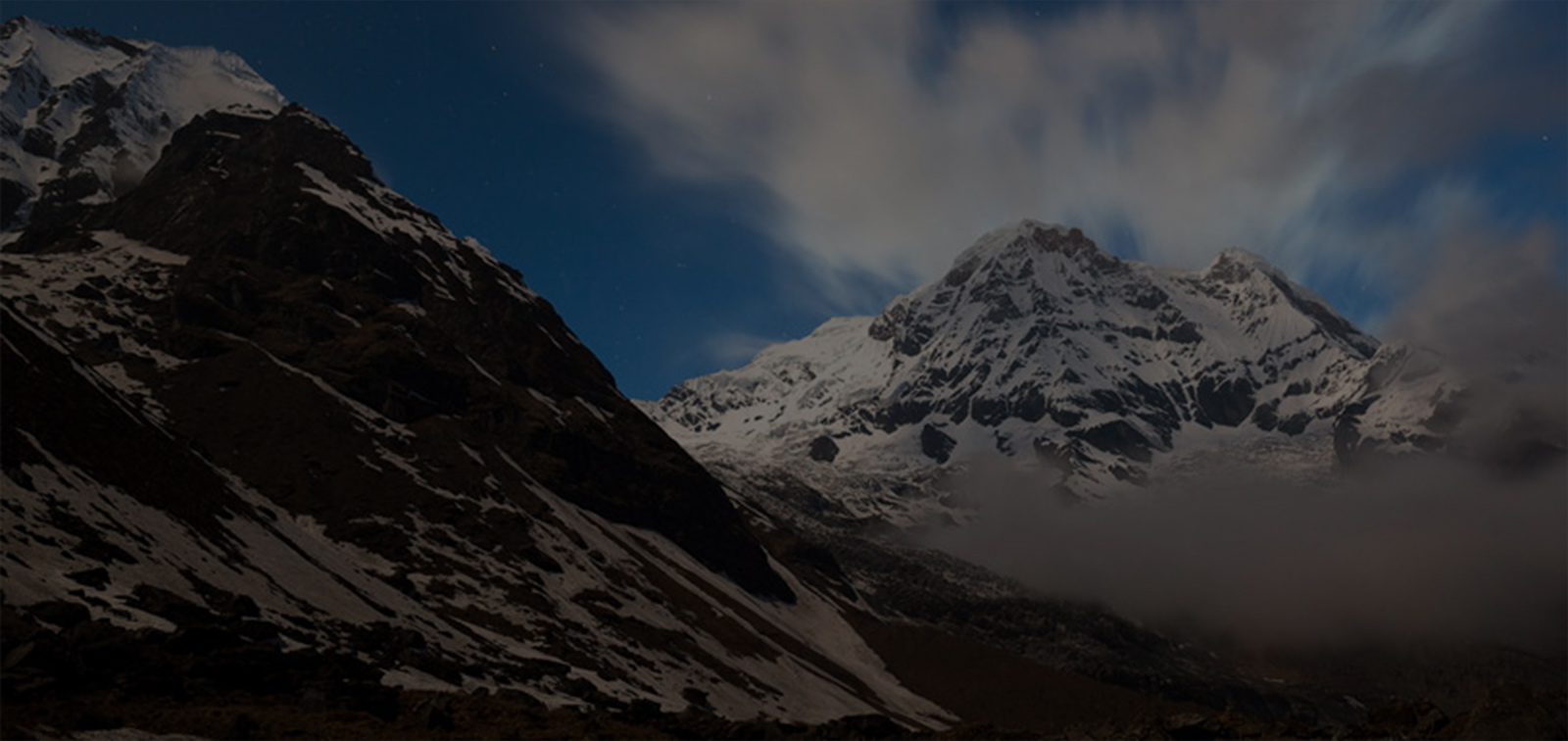Tibet - Visa Information Passport :
A traveler should carry his/her passport with validity not less than next six months. Make sure that it has plenty of blank pages for visas, entry and reentry stamps and extensions. Besides, holding other ID's like student card or driving license will be an advantage. Loosing passport in Tibet is very bad, as you have to go to Beijing to get new one.
Visa-Travel Permit :
Travelers to Tibet are required to obtain special Group Visa/Permit. The visa processing is initiated only after you book a trip with a qualified travel agency. Original passport has to be submitted along with the Visa Application Letter (Invitation Letter) of Tibetan Tourism Authority to the Chinese Embassy in Nepal or abroad. We are eligible to process your visa/permit and can fax you the Visa Application Letter (Invitation Letter) if you wish to apply the visa abroad. Normally, Chinese embassy of Kathmandu works on Mondays, Wednesdays and Fridays between 09 30 am to 11 am. The regular visa fee is USD 26 and you can collect the passport on the third working day. For emergency processing, there will be an extra fee..
History of Tibet
Tibetan history can be traced from thousands of years back. However, the written history only dates back to the 7th century when Songtsan Gampo, the 33rd Tibetan king, sent his minister Sambhota to India to study Sanskrit who on his return invented the present Tibetan script based on Sanskrit.
Tibet's history can be divided into four period:
1. The Tsanpo's Period
This period starts from Nyatri Tsanpo, the first of the Tsanpos, in 127 B.C (historians differ in view of the date, but this date is taken from the White Annales, a reliable book on Tibetan history) and ends in 842 A.D. at the death of Lang Dharma, the last of the Tsanpos, who was assassinated by a Buddhist monk owing to Lang Dharma's ruthless persecution of Buddhism. During this period some 42 Tsanpos had ruled over Tibet among which Songtsan Gampo's rule was considered as the zenith. Songtsan Gampo was an outstanding ruler, he unified Tibet, changed his capital to Lhasa, sent Sambhota to India to study Sanskrit and promulaged a script for the Tibetan on the latter's arrival to Tibet, married Princess Wencheng of the tang Court and Princess Bhrikuti Debi of Nepal, built the Potala and the temple of Jokhang
2. The period of Decentrailzation
This period began in 842 A.D. the year of Lang Dharma's assassination, and ended in about 1260 A.D, when Pagpa, the Abbot of Sakya monastery, became a vassal of Kublai Khan, the first Emperor of the Yuan Dynasty. During this period a little is known in history except that Tibet became decentralized into a number of petty principalities.
3. The period of Sakya, Pagdu, and Karmapa's Rule
This period began with Sakya's rule over Tibet, followed first by Pagdu's rule in Lhaoka and then by Karmara's rule in the Tsang region (Shigatse). The sakya period was the time when tbiet officially became an inseparable part of China.
This period lasted from 1260 A.D to 1642 A.D during which political powers centered in the three regions of Sakya, Pagdu, and tsang successively ruled over Tibet.
4. The period of the Gandan Podrang's Administration :
This period is the period in which the Dalai Lama ruled Tibet. It started in 1642 A.D. when the 5th Dalai Lama overtook the ruling power from the Tsang ruler. It basically ended in 1951 when Tibet was liberated and came to a complete end in 1959 when rebellion led by the Dalai Lama was pacified and the People's Government of the Tibet, Autonomous Region was set up.
General Information
Welcome to Tibet !
Up on the world’s roof-top there lies a wide stretched land (Shangri-La as some people call it) filled with fascinating and mystifying works of nature and human that has captured the imagination of many great people ever since the world came to know her existence. This is no other than Tibet (presently known as Tibet Autonomous Region). Although apparently she was forbidden for several centuries, great many authentic travelers, scholars and missionaries had attempted to reach this tantalizing land amidst perils and long, long endeavoring journey. Ultimately a lucky few of them were succeeded and interpreted the world by their own perceptions, which in turn give them fame, and pleasure plus insights to the readers. You may have gone through a couple of these narrations!
Tibet used to be the mysterious, legendary and unknown Roof of the World, hidden and almost unreachable behind the highest mountains in the world can be easily reached today from Kathmandu, the capital city of Nepal to Lhasa. Now as the iron-gate has recently flung opened to the out side world to unveil the secrecy of this mesmerizing question to the limited extend, the enthusiast travelers can’t resist their temptation of rushing there to catch the glimpse of this wonderful lonely planet just to heap up their own way of understandings and extract the pleasure that store in adventurous spirit.
With Unique Adventure International, you have a chance to explore the hidden treasures of the land in unique way. We are, specialised in Tibet and offer you a adventurous journey to the World of Shangri-La "Tibet". Our offer is easily affordable through its various fascinating tour packages even to 'Mt. Kailash & Manasarovar Lake' – holy Hindu and Buddhists pilgrimage. Unique Adventure International announce its packages to make your travel dreams come true with us. Under the care of our trained staff and dedicated services, you won’t leave behind anything to ask for more!
People of Tibet
The majority of Tibet's population of 1,890,000 are Tibetans. Tibet is so thinly populated that it averages out 1.6 8 persons per square kilometers. About 90% of the people live on farming and husbandry. Farmers live in the valleys of Tsangpo River (Brahmaputra) and its major tributaries Kyichu and Nuuang-chu. this area produces barely, wheat, peas and rape-seed, the great northern grassland which occupies a good half of Tibet is the home of nomads, yaks and sheep. Nomads have no fixed abodes, and keep roaming along fine pasture together with all their belongings-tents and Livestock. The remaining population, approximately 10%, live in towns earning their living mainly On business and handicraft, and many are factory workers and government officials.
Ideology of people in this land differs greatly from any other nationality both at home in china and in the world. Religion seems almost everything. Many live for the next life, rather than for the present. They accumulate deeds of virtue and pray for the final liberation-enlightenment. Lips and hands of the elders are never at still, either busied in murmuring of the six syllable mantric prayer OM Ma Ni Pad Me Hum (Hail the Jewel in the Lotus) or in rotation of hand prayer wheels, or counting of the prayer beads. Pious pilgrims from every corner of Tibet day to day gather at jokhang Temple and bharkor Street offering donations and praying heart and soul for their own Selves, for their friends, and for their friends' friends.
Frequent visitors to Tibet can make out folks from different regions judging by costumes and dalects. Floks from agricultural regions dress in woolen home-woven gowns, and those from the grassland clad in sheepskin. men folk from chamdo wear huge tassels of black or red silk which were used in old days to get protection from light, while the Lhasa residents are more stylish and modern. Dialects in tibetan are in variety, but mainly can be categorized into four: Lhasa., Tsang (Shigatse and Gyantse), Chamdo and Amdo.
Religion of Tibet
Religion is the base of Tibetan culture. Every activity, life style and education system of Tibetans are encircled with religion.
Article 7 of the 17-Article Agreement signed on May 23, 1951, includes the clause " the policy of freedom of religious belief laid down in the common Program of the Chinese People's Political Consultative Conference shall be carried out. The religious beliefs, customs and habits of the Tibetan people shall be respected, and lama monasteries shall be protected.
Bon : The Tibetan people are very self respected and trustworthy. Generally they are known as very faithful people. The oldest religion is Bon, later Buddhism has been spread. This religion is a blend of the Bon and the Buddhism. Bon is the ancient religion of Tibet. It is difficult to distinguish between Tibetans who follow the tradition of Bon and those who adhere to Buddhism. Both share a common heritage, as well as popular religious practice such as chanting mantras, making offerings, and spinning prayer wheels. Monks receive training in astrology, medicine, poetry, and the making of religious objects. Bon monks are often called to laypersons homes to perform rituals on holy days, when there is illness, and when someone dies.
Buddhism : Probably Buddhism was first introduced to Tibet in 173 CE during the region of the 28th Yarlung King Thothori, but had apparently no impact. The first official historic introduction of a Buddhist scripture into Tibet happened during reign of a King Hlato. Buddhism revived, with the help of King Yeshe O. A real revival occurred after 1042, when Atisha-di-Pankhara pur Tibetans "Back on the right Track". He presented the Buddhist philosophy in a very clear and condensed manner, which became the basis for philosophical teachings in most Tibetans traditions. Buddhism is still prevent in Tibet and the temples and monasteries that were destroyed are rebuilt. The Chinese government still has a strong hold on religious practices, including placing a limit on the number of religious buildings.
Lama's : They are the teachers of Buddhism. Lama's play an important role in Tibetan Buddhism. Lama teach all the monks. The Lama is the one that takes care that the system of Buddhism will continue to work. In 1578 the Lama Sonam received the title of Ta-Le (Dalai) from the Mongolian ruler Atlan khan. Because he wad the third reincarnation found in a row he became the third Dalai Lama.
Climate of Tibet
Basically, the Tibetan climate is not as harsh as many people imagine it to be. The best time of year to be in Tibet is from April to the beginning of November, after which temperatures start to plummet.
The central Tibet, including Lhasa, Gyantse, Shigatse and Tsedang, generally has very mild weather from April to November, though July and August can be rainy - these two months usually see around half of Tibet's annual rainfall.
October and November often bring some dazzling clear weather and daytime temperatures can be quite comfortable at Tibet's lower altitude.
The coldest months are from December to February. It is not impossible to visit Tibet in winter. The low altitude valleys of Tibet (around Lhasa, Shigatse and Tsedang) see very little snow.
Spring does not really get under way until April, though March can have warm sunny days and is not necessarily a bad month to be in Tibet. More specific information in different areas:
Lhasa - the border of Nepal/China : A friendship highway links Nepal with China along which one can travel without any hindrance round the year but in rear cases December to February, the thawed road could make some trouble. Besides, try to avoid August - landslide could happen in the rainy season.
Mt. Everest Region : Early May and early October are the best time to visit Mt. Everest. Due to the clear weather, you have great chance to see Mt. Everest's true face. From December to February, it's too cold to go to this region. But the magnetic beauty of Mt. Everest always attracts people anytime of the year.
Ali (Mt.Kailash) : Even without climate restrictions, this area is already inhospitable. Big rain and snow could make the journey worse. However, for those determined tourists, the appropriate time is May, June, July, September and October.
Eastern Tibet : Don't touch this area in July or August, the rain could ruin the road, and make terrible landslides. While in winter, the road could be frozen.
Northern Tibet : With the average altitude of 4,500m, this area offers very limited time for tourists. Summer is the prime time to enjoy the great plain in northern Tibet.
Geography of Tibet
Tibet, a rich and beautiful land, is located at the main part of Qinghai-Tibet plateau, south-West frontier of China. Tibet borders with Sichuan, Yuannan, Qinghai And Xinjiang; to the south contiguous to India, Nepal, Sikkim, Bhutan and Burma, and bounded by Kashmir on the west. When the word Tibet is mentioned something icy chills the readers' nerves. In fact it snows only once or twice in a year and owing to the perpetuity of bright sunshine, it is not at all cold during the daytime even in the coldest of the winter. Tibet is so sunny that it produces a year-round sunshine of over 3,000 hours in a year. Its old name-"land of snow" - the name by which Tibet is almost popularly known as, is always thickly covered with snow with hardly any signs of inhabitation. In fact, it is correct only when it is referred to the world greatest ranges located in Ima, the Tisi, and like. These ranges, run by leaps and bounds across the country showing their beautiful snow covered peaks against the bluest of skies.
Geographically, Tibet can be divided into three major parts, the east, north and south. The eastern part is forest region, occupying approximately one-fourth of the land. Virgin forests run The entire breadth and length of this part of Tibet. The northern part is open grassland, where nomads and yak and sheep dwell here. This part occupies approximately half of Tibet. The southern and central part is agricultural region, occupying about one-fourth of Tibet's land area. with all major Tibetan cities and towns such as Lhasa, Shigatse, Gyantse and Tsetang located in this area, it is considered the cultural center of Tibet. The total area of the Tibet Autonomous Region is 1,200,000 square kilometers and its population is 1,890,000. The region is administratively divided into one municipality and six prefectures. The municipality is Lhasa, while the six prefectures are Shigatse, Ngari, Lhaoka, Chamdo, Nakchu and Nyingtri (kongpo). The People's Government of the Tibet Autonomous Region exercises the highest administrative authority in Tibet.
Festivals in Tibet
Tibetan New Year (February or March)
It is the greatest festival in Tibet. In ancient times when the peach tree was in blossom, it was considered as the starting of a new year. Since the systematization of the Tibetan calendar in 1027 AD., the first day of the first month became fixed as the new year. On the New Year's day, families unite " auspicious dipper" is offered and the auspicious words " tashi delek" are greeted.
Butter Oil Lantern Festival (February or March)
It's held on the 15th of the first lunar month. Huge yak-butter sculptures are placed around Lhasa's Barkhor circuit.
Saga Dawa Festival (May or June)
It is the holiest in Tibet, there memorable occasions coincide on this day, Buddha's birth and Buddha's enlightenment. Almost every person within Lhasa join in circumambulations round the city and spend their late afternoon on picnic at " Dzongyab Lukhang" park at the foot of Potala.
Cost : US$ 2,500.00
Gyantse Horse Race & Archery (May or June)
Horse race and archert are generally popular in Tibet, and Gyantse enjoys prestige of being the earliest in history by starting in 1408. Contests in early times included horse race, archery, and shooting on gallop followed by a few days' entertainment or picnicing. Presently, ball games, track and field events, folk songs and dances, barter trade are in addition to the above.
Changtang Chachen Horse Race Festival (August)
There are many horse racing festivals in Tibet, the one in Nagqu of Northern Tibet is the greatest. August is the golden season on Northern Tibet's vast grassland. Herdsmen, on their horsebacks, in colorful dresses, carrying tents and local products, pour into Nagqu. Soon they form a city of tents. Various exciting programs are held, such as horse racing, yak racing, archery, horsemanship and commodity fair.
Shoton Festival (August)
It is one of the major festivals in Tibet, also known as the Tibetan Opera Festival. The founder of the Gelugpa (Yellow Sect of Buddhism), Tsongkhapa set the rule that Buddhists can cultivate themselves only indoor in summer, to avoid killing other creatures carelessly. Because creatures are most active in summer. This rule must be carried out till the seventh lunar month. Then Buddhists go outdoor, accept yoghurt served by local people, and have fun. Since the middle of 17th century, the Fifth Dalai Lama added opera performance to this festival. Famous Tibetan opera troupes perform in Norbulingka (Dalai Lama's summer palace).
Bathing Festival (September)
It is believed when the sacred planet Venus appears in the sky, the water in the river becomes purest and cures diseases. During its appearance for one week, usually the end of the seventh and beginning of the eighth lunar months, all the people in Tibet go into the river to wash away the grime of the previous year.
Kungbu Traditional Festival (November or December)
Long long ago, when Tibet was in danger of large scale invasion, the Kongpo people sent out an army to defend their homeland. It was in September and the soldiers worried that they might miss the New Year, highland barley wine and other good things. So people had the Tibetan New Year on 1st October ahead of time. To memorize those brave soldiers Kongpo people present three sacrifices an stay up at night from then on. And now it has become the Kongpo Festival for entertainment like Kongpo dancing, horse race, archery and shooting.
Harvest Festival (September)
During that time, the farmers of Lhasa, Gyantse and Shangnan celebrate their bumer harvest in this time. people enjoy with horse racing games, custom fashion show, songs and dance Archery and picnic etc.





















